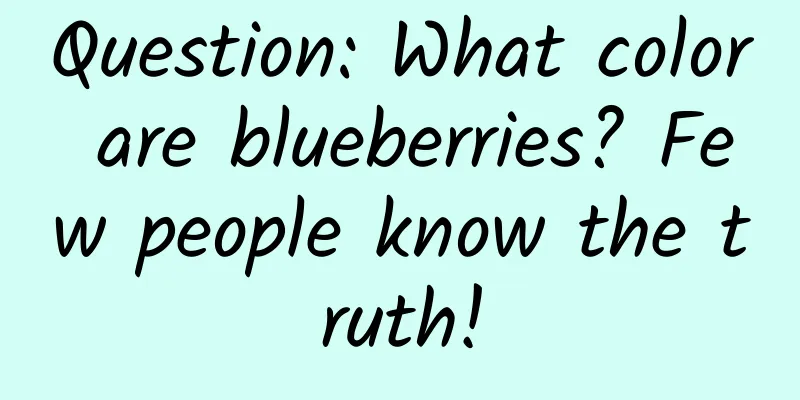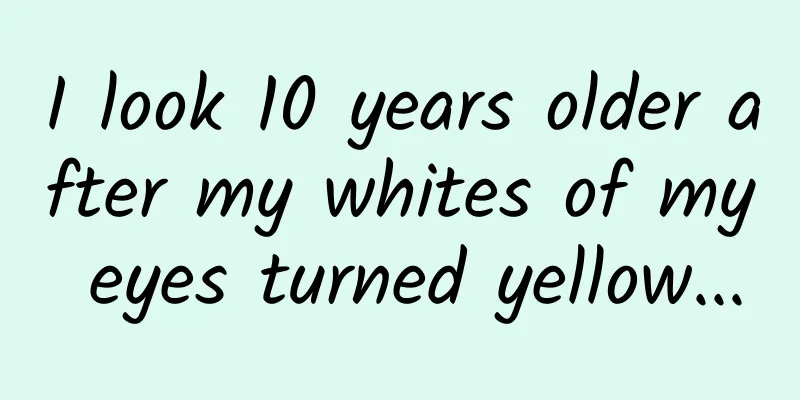Question: What color are blueberries? Few people know the truth!

|
Color is a language of plants. Through colors, we can see the adaptation and competition of different plants in nature. A bright red apple, a blooming pink flower and a grapefruit tree full of yellow fruits, these representative colors are subtly conveying the wisdom of plant survival. Image source: davidspeer However, looking at the entire natural world, blue plants (including flowers and fruits) are not common. Blueberries may be the first blue plant (fruit) that comes to mind. However, contrary to common sense, if blueberries are squeezed into juice, the color presented is deep red-purple instead of indigo. Low-cold blueberry varieties (Photo courtesy of diggers) Where does blueberry get its blue color? Why is blue so rare in nature? Origin of Color In the middle of the 17th century, scientist Exar Newton conducted a famous experiment: dispersion of light. He let a beam of white light pass through a prism, and the white light was separated into a visible spectrum from red to violet. The reason for this phenomenon is that the white light is refracted in the prism, and each color of light actually has a different frequency, so the speed when passing through the prism is also different, causing the colors to bend at different angles and separate into a visible spectrum. A beam of white light passes through a prism, showing a color spectrum Source BBCbitesize This experiment shows that white light is actually a mixture of multiple colors. When light of different frequencies (such as sunlight) shines on our eyes, our brain automatically combines the different colors into white. However, if white light is directed elsewhere, the situation changes. For example, when sunlight shines on the blue traffic signs commonly seen on the roadside, most colors are absorbed, while blue light is reflected. Therefore, the light from the traffic signs that shines on our eyes is mainly blue light, and the signs also appear blue in our eyes. The same principle applies to most things we see in everyday life, blueberries appear blue because they reflect blue light, and leaves appear green because they reflect green light and absorb other colors. Simply put, the colorful world we see is because when white light shines on an object, some colors are reflected and the rest are absorbed. The red color of the apple is reflected in our eyes. Image source: dentalcare Now that we understand the origin of color, let's go a step further - what determines which colors will be reflected? What kind of blue is the blue in blueberries? As we all know, plants contain biological pigments. The molecules in these pigments interact with light of different colors in different ways, so they can selectively absorb certain colors of light and reflect other colors of light. This is also the first way color is produced. Chlorophyll is a typical example. Many plants that need to carry out photosynthesis have chlorophyll. When sunlight shines on them, almost all of the red, blue, yellow and other colors of light will be absorbed, but green light will not. On the contrary, green light will be reflected, making the plants look green. Leaves reflecting green light Image source: vedantu According to this idea, many people also believe that blueberries appear blue because of the anthocyanins they contain. However, the latest research clearly shows that the color of blueberries is not determined by the pigments in them, because although blueberries contain high concentrations of anthocyanins, their scattering curve is generally dark red, which is completely different from the indigo on the skin. After peeling the blueberry skin, you can see the dark red flesh. So, how do blueberries get their blue color? The answer comes from the second way to produce color: structural color. This form of color is less common, but can produce some of the most vivid colors in nature. Unlike the first way to produce color, nanostructures of non-absorbing molecules can interact with light through wave interference to reflect bright, highly saturated colors. Examples of structural colors in nature. Image source: biomimiicry So where does the structural color of blueberries come from? I don't know if you have noticed that the surface of blueberries is always covered with a layer of white, frost-like substance, which is actually their protective wax, which many plants have. This plant protective wax has the ability to self-sort and self-repair, and determines most of the characteristics of plants, such as hydrophobicity, self-cleaning, and resistance to insects and microbial pathogens. Protective wax on the surface of blueberries (Image source: plantura) Obviously, plant waxes, like other biomaterials such as cellulose, are a hot topic of research, but surprisingly, research on waxes has mainly focused on the hydrophobicity of their surfaces, while little research has been done on the optical properties of waxes. Rox Middleton, a researcher from the University of Bristol in the UK, paid attention to this field. He was very interested in the source of the blue color of blueberries, so he took a sample of the wax on the surface of blueberries and recrystallized it, and as a result, he reproduced the indigo color of the blueberry surface. Scanning electron microscopy revealed that the waxy coating on the surface of blueberries has randomly distributed crystal structures, which scatter blue and ultraviolet light, giving blueberries their unique indigo appearance. In vitro recrystallization reproduces structural color protective wax. Image source: research paper attached Why is blue so rare? In nature, blue rarely appears on organisms. The few species with blue, such as bellflowers, butterflies and tropical frogs, basically rely on structural color to produce this color, and its purpose is mainly to defend against predators. Even blue rocks and minerals, such as sapphires and lapis lazuli, are extremely rare in nature. Azurite Image Source: sergebriez The reason behind this is that natural blue pigments are almost non-existent in plants and animals. And compared to red light, which has a longer wavelength and lower energy, reflecting blue light requires a low-energy photon that absorbs a small amount of energy to absorb the red part of the spectrum. Plants find it difficult to produce such large and complex molecules. Therefore, structural color provides a low-cost way to "turn blue". The bright blue feathers of birds. Image source: wrearodsawang Although blue is rare in nature, humans have created a variety of blues by imitating two ways of producing colors. Whether it is using chemical methods to mix pigments or using the clever reflection of light and structure, blue has gone from being rare to a common embellishment in life. References Self-assembled, disordered structural color from fruit wax bloom https://doi.org/10.1126/sciadv.adk4219 Bio-inspired Materials: Structural Color in Nature https://www.sbnature.org/publications/blog/2/posts/66/bio-inspired-materials-structural-color-in-nature Why is the color blue so rare in nature? https://www.livescience.com/why-blue-rare-in-nature.html Author: Fish Editor: Dong Xiaoxian Reviewer: Liu Kun and Li Peiyuan |
Recommend
Microsoft's immortal dream of mobile phones
[[337819]] The long-awaited Surface Duo, Microso...
Are sprouted potatoes poisonous? Eating these 9 foods incorrectly can cause "poisoning", so be careful when eating them!
Recently, the news #Girl fainted and was sent to ...
20 thoughts on marketing, copywriting, and new media!
1. There is a very famous marginal effect in econ...
3 laws of hit products!
In the post-mobile Internet era with the implemen...
Hupu APP Product Analysis Report
This article conducts product experience and anal...
Paphiopedilum sclerophyllum, a beautiful legend
As a member of the orchid family, Paphiopedilum s...
Is it true that it will rain during Qingming Festival?
Audit expert: Zhan Mingjin PhD, Chinese Academy o...
Is the increasingly entertaining QQ intended to defeat WeChat?
Recently, QQ and WeChat have been continuously upd...
A Generation of Lifelong Learners - An Interview with Andy Matuschak
[[126900]] Andy Matuschak currently works at Khan...
What is the difference between the 5 yuan and 25 yuan toothpaste in the supermarket? How to choose? Don't waste money anymore!
Many people may have seen promotions like this: t...
User growth = fission? 3,000 words to explain the concept of "fission" to you!
In the past few years, I have been deeply engaged...
Why can't you get your tan back? It must be because you didn't do these things! The last trick is the most important!
In the hot summer, more and more fairies like to ...
Instant messaging apps are growing faster than social networking sites
Instant messaging apps and social networks, which...
Electric Technology Car News: Land Rover, which has always been tough, has undergone a transformation. Can its feminine beauty convince believers?
The Land Rover Discovery, which has always been k...









